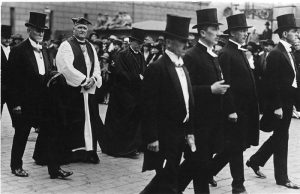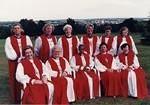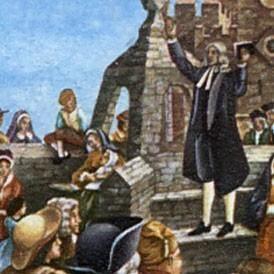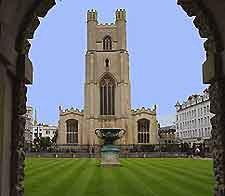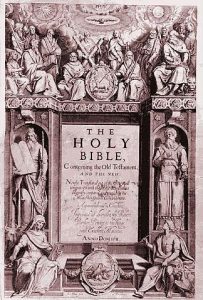The revision of the Prayer Book
Tensions resulting from the introduction of Anglo-Catholic practices in some Anglican Church parishes led to a revision of the Prayer Book and a commission worked on it for over twenty years. Although this project was ratified by the Church Assembly, it was twice rejected by the House of Commons – in 1927 and 1928. In spite of this, the Bishops, deliberately going against Parliament’s decision, decided to authorise the new version alongside the old Prayer Book. In 2000, a new prayer book called Common Worship was published, which catered for a variety of theological perspectives ; it sanctioned a range of different forms of service within the Anglican Church. The charismatic movement, which was developing rapidly at the time, also contributed to this diversity.
The ecumenical movement
The ecumenical movement began in Edinburgh in 1910 at the time of an interdenominational missionary conference organised by a Methodist and an Anglican with the aim of developing missionary co-operation between the various Christian denominations. Later, Anglicans played an important role in the organisation called “Faith and Constitution”, which worked towards a rapprochement of the different Churches. After the setting up of the Ecumenical Council of Churches (ECC) in 1948, Anglicans continued to be the leaders of the ecumenical movement.
On a national level, between 1921 and 1925 during the Conversation of the Malouines, the Church of England and the Catholic Church tried to work together, but Rome put an end to these discussions. However, they continued again after Vatican II.
Another attempt at union with the Methodists nearly succeeded, but was thwarted in its latter stages by the clergy of the Church of England, who voted against it.
In 1942 the British Council of Churches was set up. It brought together the Anglican Church of England and the other protestant Churches in Great Britain. In 1990, with the addition of the Catholic Church, this became “Churches Together in Britain and Ireland”.
A modernized Church
Concerning doctrine, more and more members of the clergy (and even the Anglo-Catholics) were won over by the liberals. Nowadays, a tolerant attitude towards doctrine is expected in the Anglican Church.
In 1974, Parliament passed a law entitled ‘Worship and Doctrine measure’, which gave the Church a free rein in matters of doctrine and liturgy. The Church became autonomous and was freed from any political control. The appointment of bishops and other major decisions concerning the life of the Church still required the approval of Parliament and the Queen, but such procedures were now treated as formalities and nothing more.
The Church became more and more involved in social and political issues. The Archbishop of Canterbury, William Temple (1881-1944), played a major role in the Second World War. And Robert Runcie (1921-200), was against Margaret Thatcher during the war in the Falkland Islands in 1982 ; he also criticized the fact that she had no credible social policy. The Church played an increasingly important part as a moral guide to the nation ; it saw this as a new way of fulfilling its role as the established Church.
The ordination of women in 1994 caused 720 Anglican priests to leave the Church, even though the matter had been discussed at length beforehand. Some joined the Catholic Church permanently while others later returned to the Anglican Church. The Church of England was badly shaken by secularization, losing more than half its members during the course of the XXth century. What’s more, its unity was threatened by the existence of a wide variety of different theological tendencies side by side (Anglo-Catholics/Avangelicals ; Liberals/Conservatives).
Some figures
In Great Britain, there are more than 25 million who call themselves Anglican. But of the 2.5 million practicing Protestants 300 000 are Methodists, 150 000 Reformed and 140 000 Baptists.
The Church of England forms part of the Anglican Communion, which includes all the other Churches belonging to the Anglican community throughout the world (most of these are called Episcopalian Churches). There are 77 million members, many of whom are found in North America and in the former Commonwealth countries:
- 2.5 million in America
- 4 million in Australia
- 2.2 million in South Africa
- 5 million in Kenya
- 18 million in Nigeria
Today nearly half of all Anglicans are to be found in Africa.

